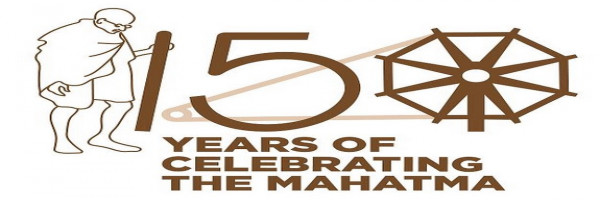Citizen's Charter
A Citizens' Charter represents the commitment of the Organisation towards standard, quality and time frame of service delivery, grievance redress mechanism, transparency and accountability. Department of Administrative Reforms and Public Grievances, in the Ministry of Personnel, Public Grievances and Pensions, Government of India, in its efforts to provide more responsive and citizen-friendly governance coordinates the efforts to formulate and operationalise Citizens' Charters. Various Central Government Ministries/ Departments/ Organisations have brought out their Citizens' Charters. With a view to ensure effective implementation of Citizens' Charter, Nodal Officers have been appointed in the concerned Central Government Ministries/ Departments/ Organisations.
Framework & Components
Citizen’s Charter is a document of commitments made by a Government organization to the citizens/client groups in respect of the services/schemes being provided to them or to be provided to....
Citizen’s Charter is a document of commitments made by a Government organization to the citizens/client groups in respect of the services/schemes being provided to them or to be provided to them. The objective of Charter exercise is to build bridges between citizens and administration and to streamline administration in tune with the needs of citizens. This exercise, if appropriately conceived and carried out, can enthuse and enable organizations to tune their planning, policy and performance to the needs and concerns of citizens/ stakeholders/ users/ clients. For this transformative process to materialize, effective strategies of realization would have to be worked out at multiple levels and authentification of these strategies needs to be attempted at every level in the political and administrative system. These strategies must incorporate three elements. One, clarity at every level about the objectives of Charter as an instrument of policy rationalization and administrative tuning to deliver policy goals expected by the citizens. Two, designing and delivery of Charters as live instruments of citizen-administration interface and instituting citizen in public domain. Three, evolving mechanisms for Charter monitoring, Charter evaluation and Charter review. Instituting a system of acknowledging effectiveness in Charter implementation can help the process.
SEE MORE
SEE LESS
CLEAR
Formulation of Citizen's Charters: A Road Map
(i) Formation of Task Force
(ii) Identification of all Stakeholders and major services to be provided by Organisation
(iii) Consultation with Clients/Stakeholders/Staff (Primarily at cutting-edge level) and their representative associations
(i) Formation of Task Force
(ii) Identification of all Stakeholders and major services to be provided by Organisation
(iii) Consultation with Clients/Stakeholders/Staff (Primarily at cutting-edge level) and their representative associations
(iv) Preparation of Draft Charter
(V) Consideration of the Charter by Core Group
(VI) Modification of Charter by the Ministry/Department on the basis of suggestions/observations by the Core Group
(VII) Approval by the Minister-in-charge
(VIII) Submission of a copy of the charter to the Department of Administrative Reforms and Public Grievances
(IX) Formal issue/release of Charter and putting up on website
(X) Sending copies to People's Representatives and all stakeholders
(XI) Appointment of a Nodal Officer to ensure effective implementation
SEE MORE
SEE LESS
Citizen's Charters - Model Guidelines
(i) To be useful, the Charter must be simple
(ii) The Charter must be framed not only by senior experts, but by interaction with the cutting edge staff who will finally implement it and with the users (individual organisations)
(iii) Merely announcing the Charter will not change the way we function. It is important to create conditions through interaction and training for generating a responsive climate
(i) To be useful, the Charter must be simple
(ii) The Charter must be framed not only by senior experts, but by interaction with the cutting edge staff who will finally implement it and with the users (individual organisations)
(iii) Merely announcing the Charter will not change the way we function. It is important to create conditions through interaction and training for generating a responsive climate
(iv) Begin with a statement of the service(s) being offered
(V) A mention be made against each service the entitlement of the user, service standards and remedies available to the user in case of the non-adherence to standards
(VI) Procedures/cost/charges should be made available on line/display boards/ booklets inquiry counters etc at places specified in the Charter
(VII) Indicate clearly, that while these are not justiciable, the commitments enshrined in the Charter are in the nature of a promise to be fulfilled with oneself and with the user
(VIII) Frame a structure for obtaining feedback and performance audit and fix a schedule for reviewing the Charter every six months at least
(IX) Separate Charters can be framed for distinct services and for organisations/ agencies attached or subordinate to a Ministry/Department
SEE MORE
SEE LESS
Citizen's Charters - General Structure Guidelines
(i) A brief statement regarding the services concerned
(ii) Public Interface of the service concerned to be addressed (e.g., Reservation, Passenger amenities by Railways, Mail Delivery, Premium services by Post etc)
(i) A brief statement regarding the services concerned
(ii) Public Interface of the service concerned to be addressed (e.g., Reservation, Passenger amenities by Railways, Mail Delivery, Premium services by Post etc)
(iii) Commitment to Standards (Time frame, Quality of service)
(iv) The Staff: What to except from them?, Where are they located?, What information do they need? If things go wrong (remedial measures): What could go wrong, Whom to contact, What to expect to set it right, How Citizen's can help the organisation?
SEE MORE
SEE LESS
What Makes a Good Charter?
(i) Focus on Customer Requirements
(ii) Simple Language
(iii) Service standards
(i) Focus on Customer Requirements;
(ii) Simple Language
(iii) Service standards
(iv) Effective Remedies
(V) Training
(VI)Delegation
(VII) Feedback Mechanism
(VIII) Close Monitoring
(IX) Periodic Review
SEE MORE
SEE LESS
Do's and Dont's for Implementing the Charters
(1) Make haste, slowly
(2) List areas of interface
(3) Phase out areas for introduction of small steps
(1) Make haste, slowly
(2) List areas of interface
(3) Phase out areas for introduction of small steps
(4) Involve customer and staff in formulating and implementing them
(5) Prepare a Master Plan for formulation and implementation over five years and budget for the period
(6) Win consumer confidence with small, highly visible measures
(7) Be responsive to the need for the charters to be evolving in nature
(8) Inform the customer of the proposed commitments
(9) Use simple language
(10) Train you staff
(11) Delegate powers
(12) Set up systems for feedback and independent scrutiny
(13) Don't merely make haste
(14) Don't be unrealistic
(15) Don't take on more than you can commit
(16) Don't involve only senior officers in their formulation and implementation
(17) Don't rush into an overall package for the whole Ministry/Department/ Organisation
(18) Don't look upon it as a one-time exercise, with a final outcome
(19) Don't inform the customer unless you are sure of delivering the service
(20) Don't centralize
(21) Don't continue blindly without regular periodic reassessment of performance.
SEE MORE
SEE LESS
For further assistance, please visit our FAQ's section













